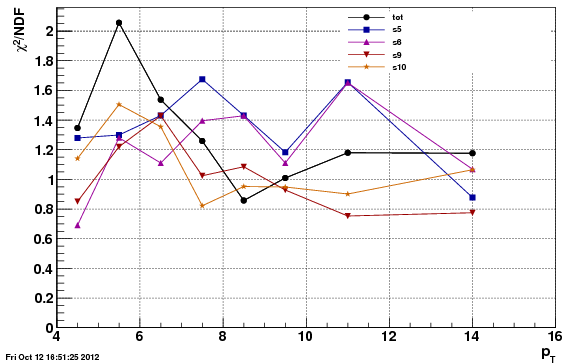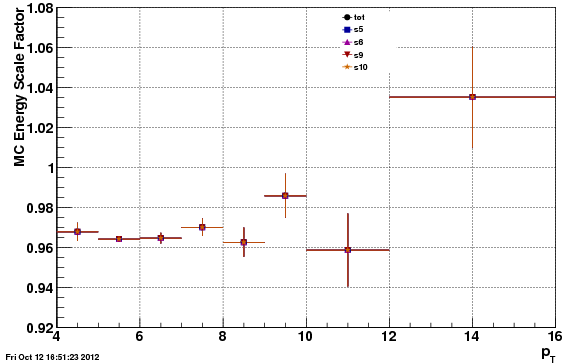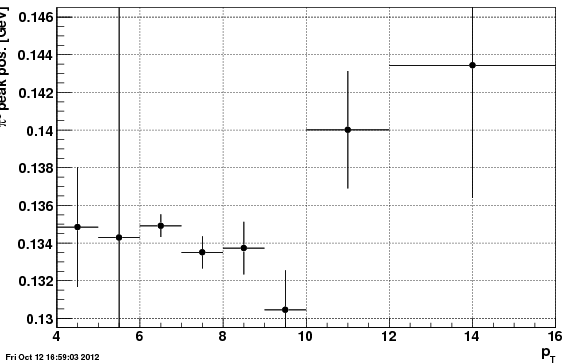Eemc pi0 Cross Section -- Oct 12 Update
Here's the updated cross section with the L2 thresholds raised to 10% above max hardware settings (3.9 GeV and 5.5 GeV). About 100 runs were used, or about 1/3 of the 2nd longitudinal data, or 1/6 of the total data.
Fit Statistics
Here's the chi^2/ndf for the background fits, the alpha, and pi0 peak position.



As with the plots yesterday, things are a little less stable due to less statistics being used. Also, the lowest pT bins are starting to suffer from statistics due to the higher trigger thresholds. Note: the peak position uncertainty is strangely large, as the alpha uncertainty is fine. This must be a minor instability in computing the peak position, as this is an independent calculation, not derived from the basic fit, but calculated afterwards based on the data - background distribution.
Cross Section
\frac{1}{2\pi}

The cross section points now seem much more self consistant, in that they seem to follow the same curve. However, they still do not follow the theory curve.
Conclusions
The formula for the cross section is
where the first 3 terms are the bin widths in phi, eta, and pT. There is a factor of 1/pT, one over epsilon (the product of the reco and trig efficiencies) the branching ratio of pi0 -> 2 gamma (0.98789), the number of unfolded pi0s, the number of BBC mb events, and the BBC cross section (26.1 mbarns). The number of pi0s is the background subtracted, unfolded number. The unfolding changes reduces the overall normalization by about 15%, due to correction for events reconstructed within the pT range but generated below.
The each of these factors has been considered and investigated during the last 10 days since we received the theory curve. Although various minor issues have been found and solved (such as the L2 thresholds or the change to now estimating bbc counts by counting mb events rather than using the scalar boards), the general message of the theory/data comparison has remained the same. All ideas that we (ANL+Valpo) and the general spin and EEMC groups have thought of have been tested or shown to be not relevant by other tests. To the best of my knowledge, the numbers are ready for preliminary release the systematics are consistent with all studies undertaken.
- sgliske's blog
- Login or register to post comments
